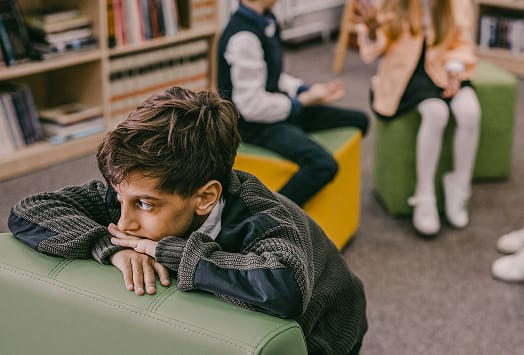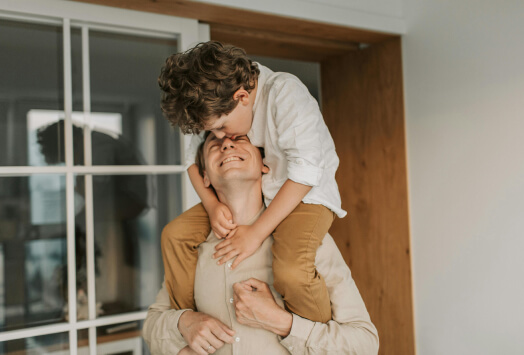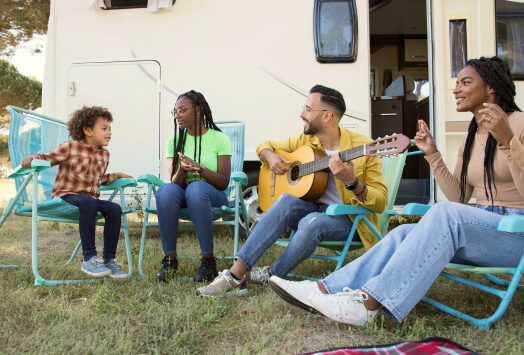Having difficult conversations with your children is one of the hardest parts of parenting. Conversations about race and tough topics like gender identity need to be done with grace. It is important to keep your child informed, especially if they might hear about something second hand from friends at school, overhear conversations between adults, or catch a sneak peek at the news. It’s best if the information comes from you in a comfortable, safe environment where they can ask questions and get the knowledge they need in an appropriate way.
However, you might think that is easier said than done! That’s why the team at Sawyer is providing you with resources to talk to your child about the Texas flood disaster. As we have these conversations with our own children, we wanted to share what works so you can help your child understand this difficult situation.
- How to talk to your child about the Texas flood disaster
- Talking to children about the disaster by age
- Organizations you can support to help the affected people in Texas
How to talk to your child about the Texas flood disaster
To start, we’ll go over some general guidelines when having these types of conversations with your child. Then, we will give some advice and talking points you can use for children of different ages to keep the conversations helpful, informative, and appropriate.
Be clear, but age appropriate, in your language
The goal is not to scare your child, but to give them the information that they need to understand what is going on. For younger children, you do not need to go into all of the details. Give a brief overview, but try to avoid euphemisms and metaphors. For both younger and older children, focus on how you will protect them and maintain that they are safe.
Listen to your child
Older children might have seen information about the disaster on TikTok and Instagram and so they might arrive to the conversation with a lot of questions. They might feel overwhelmed by the fact that children were affected and scared that it might happen to them, especially if they are attending camp this summer. Take time to listen to their feelings and answer their questions as best as you can without oversharing or making them feel more anxious.
For younger children, they might not understand what is going on even after you explain it. That’s alright. Just let them know the floor is open in case they have questions later.
Look for signs of anxiety
Your child might say they are not nervous about the situation, however, anxiety shows itself in many different ways. If they are not sleeping as well, feeling physically ill with stomachaches, not eating as much, or getting irritated, it might be anxiety rearing its head. Stay calm and sit down with your child to get to the root of it.
Ask wondering questions like, “I wonder if you are not sleeping well because you saw those pictures of the flooded camp in Texas last night on the news. Do you want to talk about how that made you feel?” Then, you can have a conversation about the situation in an open-ended fashion so that they feel comfortable sharing.
Make them feel heard, then redirect
The news coming out of Texas might make your child feel scared, confused, sad, and a million other emotions. Listen to each of their concerns and let them know that they are valid. No matter their concern, do not dismiss it.
Instead, try to redirect their anxiety into something that they can do to make themselves and others feel better. Can they raise money by selling baked goods or lemonade to donate to a charity on the ground in Texas? Can they write a letter to their Congressperson or the President expressing their concerns about climate change? Redirecting their energy will help them feel more in control.
Talking to children about disaster by age
For preschool aged children
What you can say:
“You might have heard me and Dad talking about something bad that happened in another state. Sometimes, when it rains really hard, it can cause water to gather quickly and it can be dangerous for the people that live there. That is what happened in Texas, and sadly, some people got hurt. I don’t want you to worry, though, because we will always take care of you. Do you have any questions about what is going on?”
Then, you can talk a little about what you can do to help.
“If we want to do something to help the people that got hurt in Texas, we can raise some money from friends and family to give to them and help them rebuild. Do you want to make a sign and set up a lemonade stand to help raise money?
For elementary aged children
What you can say:
“At camp or with your friends, have you heard anything about the floods that happened in Texas? It is a scary situation and it’s still ongoing, but I don’t want you to worry, there are a lot of good people working to help. However, I know you might feel scared or nervous about what happened. That’s totally normal. In fact, I feel a little nervous, too. Do you have any questions about what happened?”
They might have a lot of questions, which is okay. You don’t need to answer everything right off the bat. Don’t be afraid to say, “You know what, that’s a great question. I don’t know the answer off the top of my head. Let me do a little research and get back to you.” It’s better to get the facts than to give them incorrect information that might scare them.
Then, you can talk a little about what you can do to help.
“If we want to do something to help the people in Texas, we can raise some money to donate to organizations that are feeding people and helping them rebuild. Do you want to brainstorm ideas for what we can do to raise the money? Some examples are a bake sale, lemonade stand, making and selling art, and more.”
For teens
What you can say:
“I’m sure you’ve seen online and heard at camp and with your friends that there was a flooding disaster in Texas. How is it making you feel? Are you nervous, scared, numb? I’m going to be honest, the situation is giving me anxiety, too. I’m here if you have any questions or if you just want to talk through your feelings. It’s always better to open up rather than let them stay bottled up inside.”
They might not have questions for you or they might not want to ask. That’s ok. Just let them know the door is always open to talk about their feelings or go through questions. If you find that they are withdrawing, try to engage them by getting them involved.
Then, you can talk a little about what you can do to help.
“I think it would be great if we did something to help the people in Texas. Can you do some research on veritable, on the ground organizations that we can support? I’ll do my own research, too, and we can compare lists. Then, let’s come up with a way to raise the money. Maybe you can sell some custom art or write poems.”
Organizations you can support to help the affected people in Texas
If you are looking for some guidance on places to support, check out these verified organizations that are providing boots on the ground aid to the affected people in Texas.
- Kerr County Flood Relief
- World Central Kitchen
- Salvation Army Emergency Disaster Services
- Texas Community Recovery
- American Camp Association Disaster Assistance Scholarship Fund
- Kerrville Pets Alive
Sawyer and DaySmart made a donation to World Central Kitchen, who is providing meals to those affected by the disaster.
Navigating difficult conversations with your children about natural disasters and events is, sadly, a necessary part of parenting. We hope these talking points, tips, and resources can help you and families have effective conversations so everyone feels heard.
















